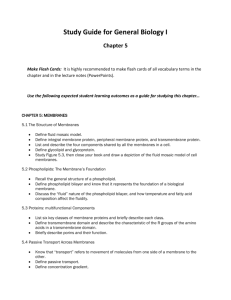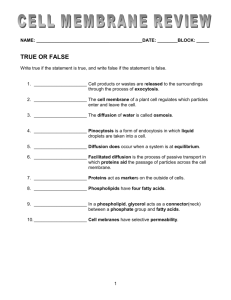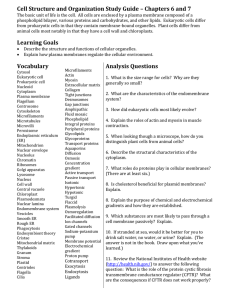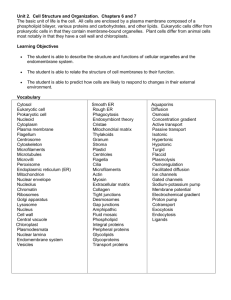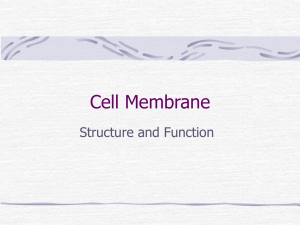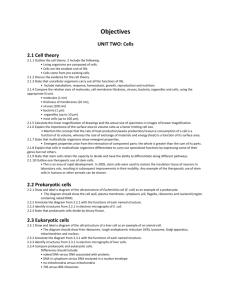Biological Membranes
advertisement
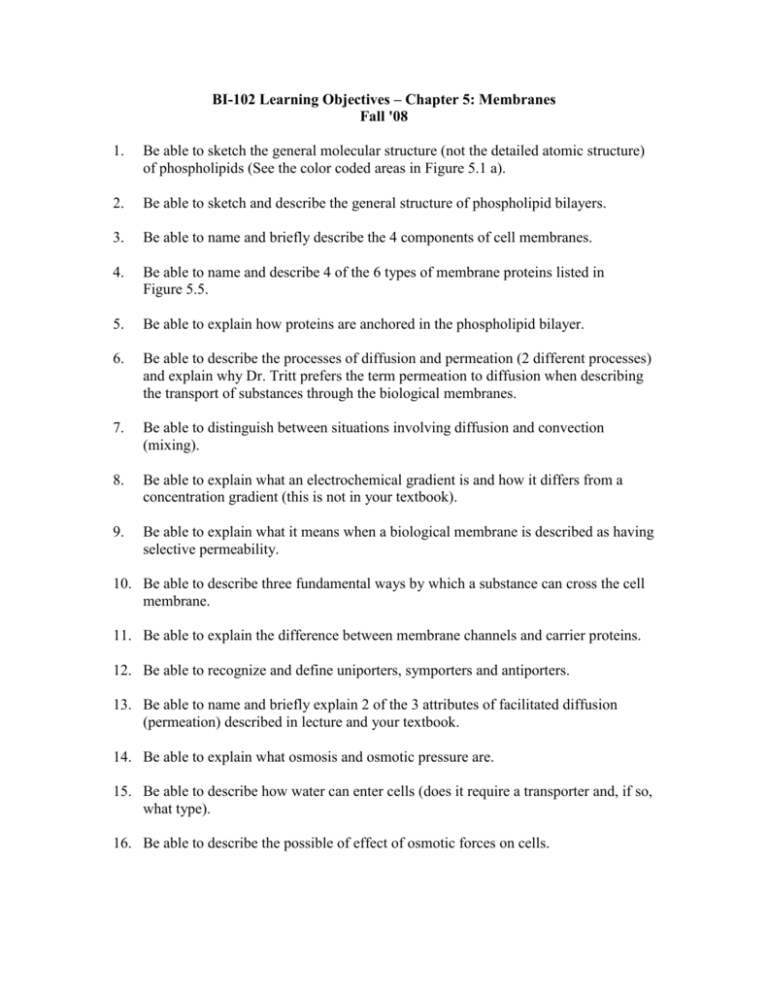
BI-102 Learning Objectives – Chapter 5: Membranes Fall '08 1. Be able to sketch the general molecular structure (not the detailed atomic structure) of phospholipids (See the color coded areas in Figure 5.1 a). 2. Be able to sketch and describe the general structure of phospholipid bilayers. 3. Be able to name and briefly describe the 4 components of cell membranes. 4. Be able to name and describe 4 of the 6 types of membrane proteins listed in Figure 5.5. 5. Be able to explain how proteins are anchored in the phospholipid bilayer. 6. Be able to describe the processes of diffusion and permeation (2 different processes) and explain why Dr. Tritt prefers the term permeation to diffusion when describing the transport of substances through the biological membranes. 7. Be able to distinguish between situations involving diffusion and convection (mixing). 8. Be able to explain what an electrochemical gradient is and how it differs from a concentration gradient (this is not in your textbook). 9. Be able to explain what it means when a biological membrane is described as having selective permeability. 10. Be able to describe three fundamental ways by which a substance can cross the cell membrane. 11. Be able to explain the difference between membrane channels and carrier proteins. 12. Be able to recognize and define uniporters, symporters and antiporters. 13. Be able to name and briefly explain 2 of the 3 attributes of facilitated diffusion (permeation) described in lecture and your textbook. 14. Be able to explain what osmosis and osmotic pressure are. 15. Be able to describe how water can enter cells (does it require a transporter and, if so, what type). 16. Be able to describe the possible of effect of osmotic forces on cells. 17. Be able to recognize and define the following concepts: hyperosmotic, hypoosmotic, hypertonic and hypotonic. 18. Be able to give an example of facilitated permeation involving red blood cells. 19. Be able to describe the fundamental feature of active transport. 20. Be able to recognize and explain the difference between primary and secondary (also called coupled) active transport. 21. Be able to recognize and describe coupled transport. 22. Be able to recognize and describe the 2 of the 3 types of carrier proteins describe in lecture and your textbook. 23. Be able to recognize and describe the processes of endocytosis and exoytosis.
